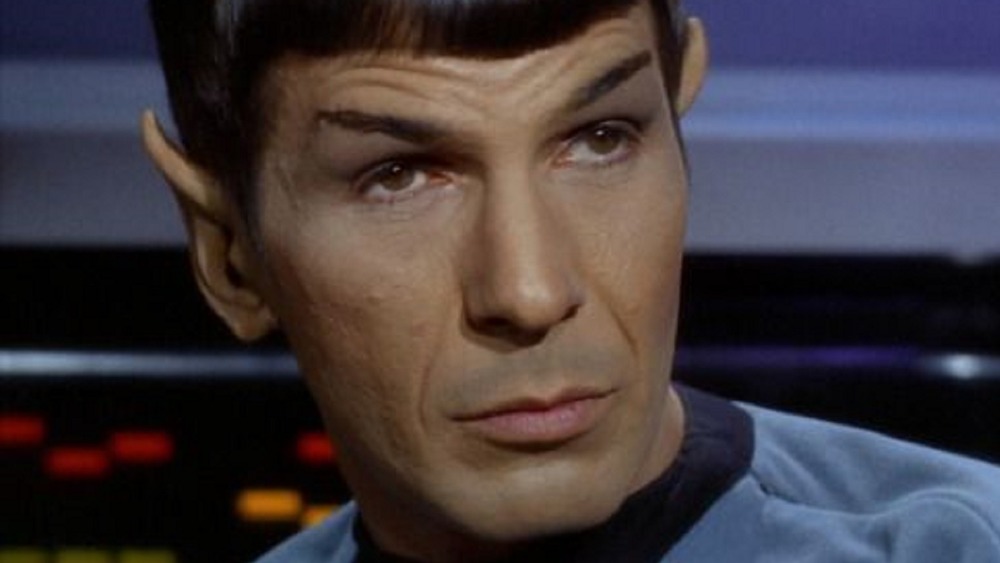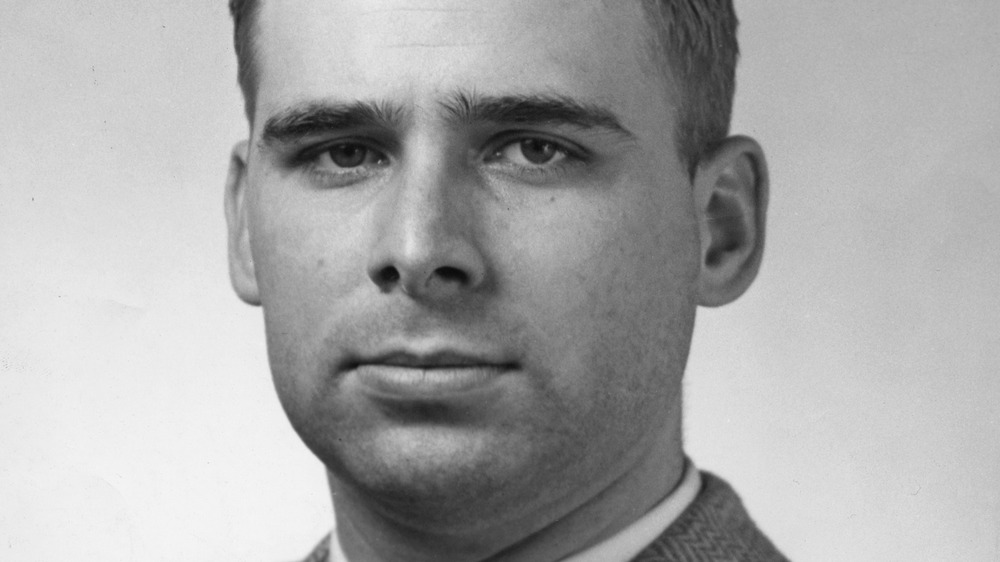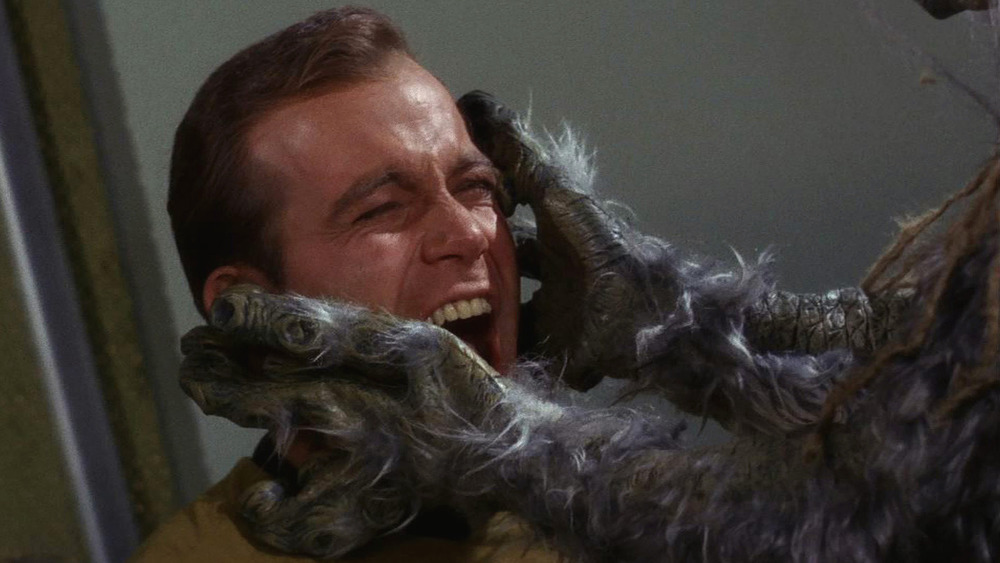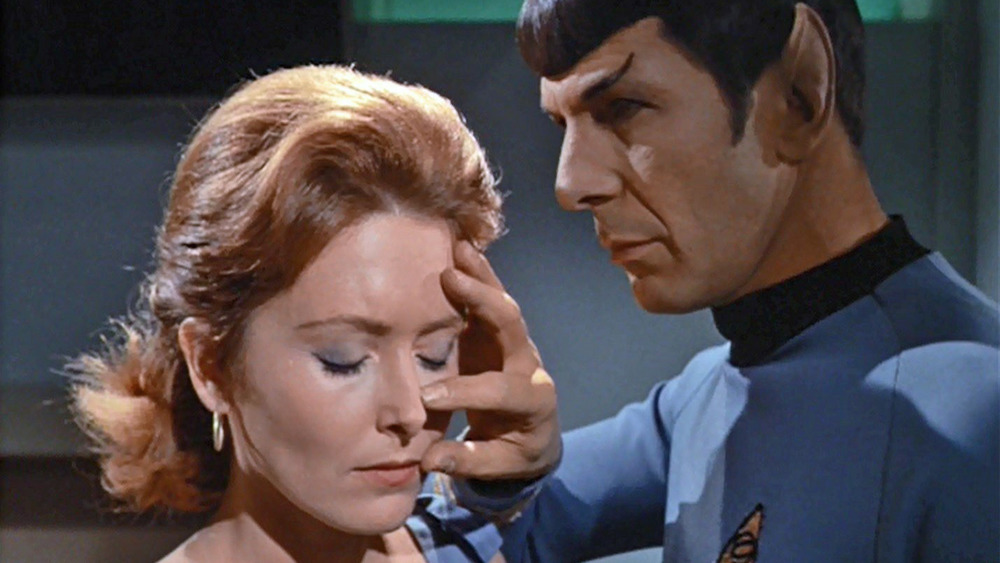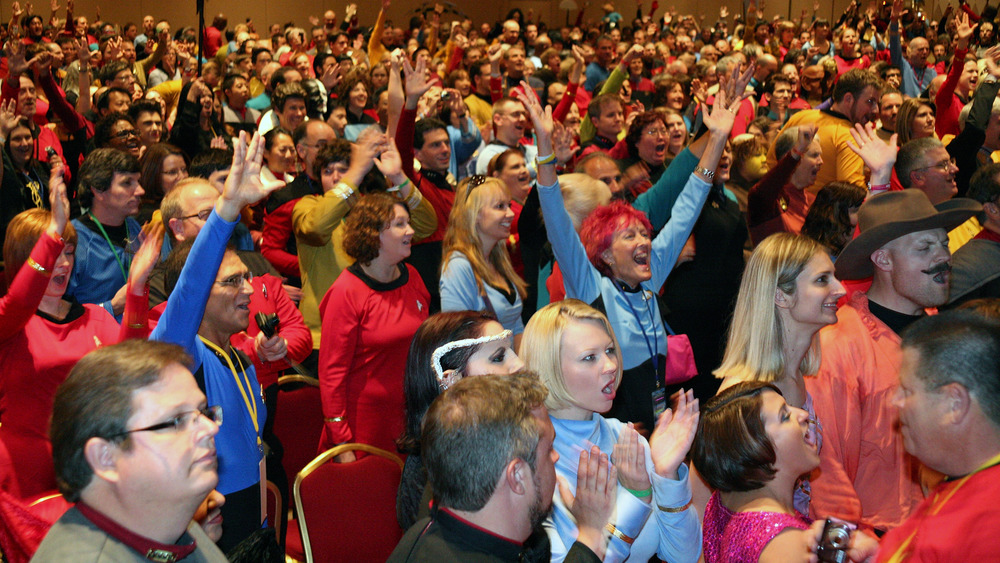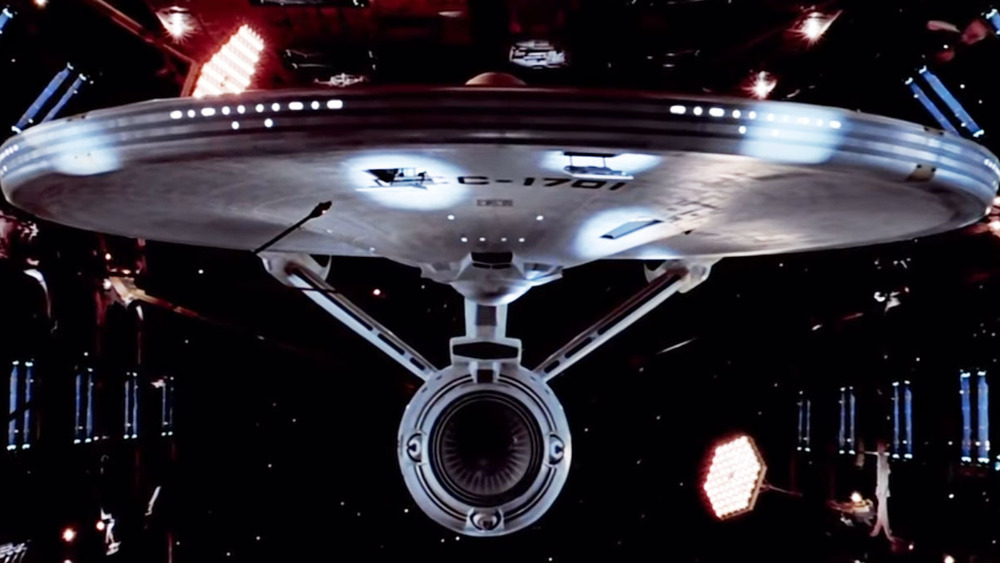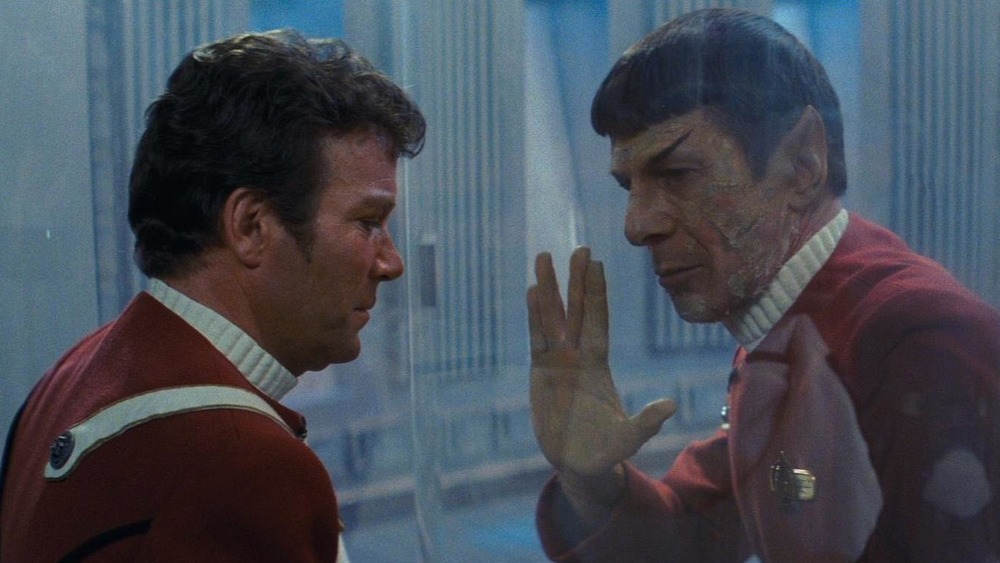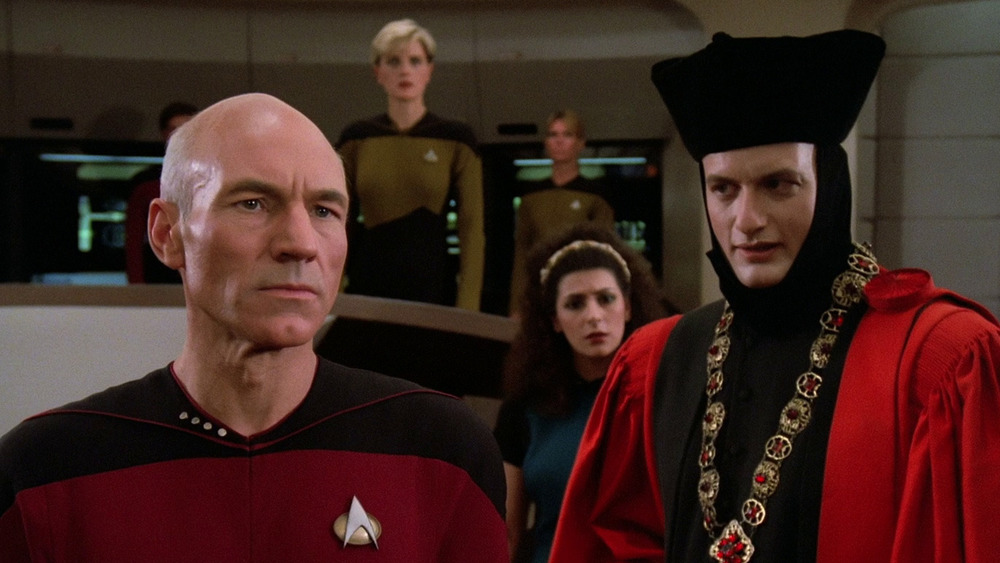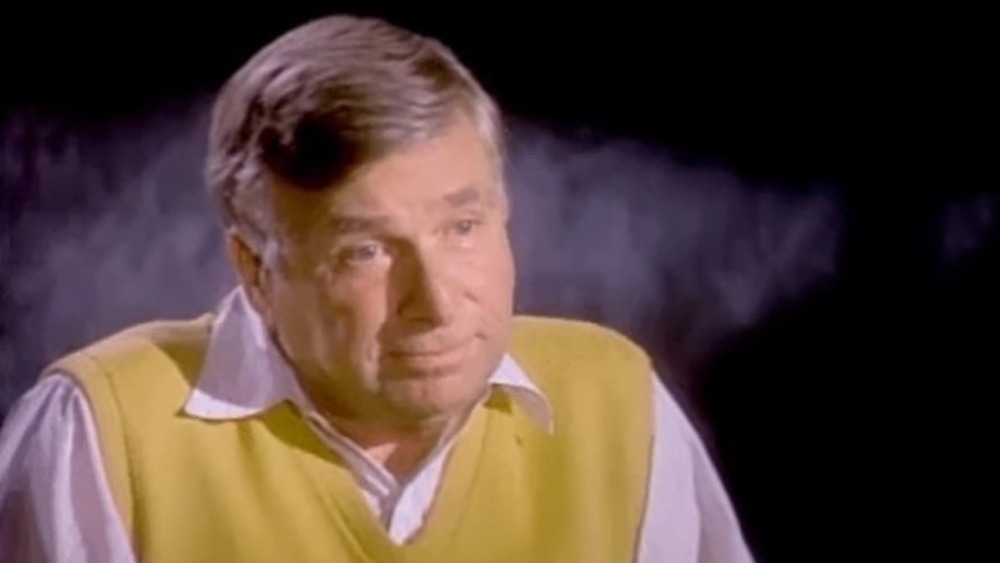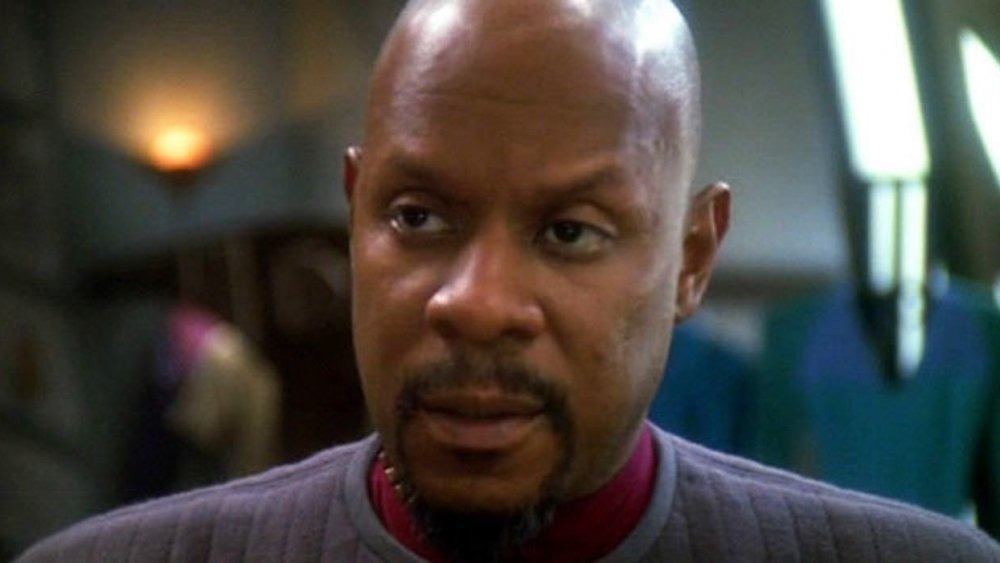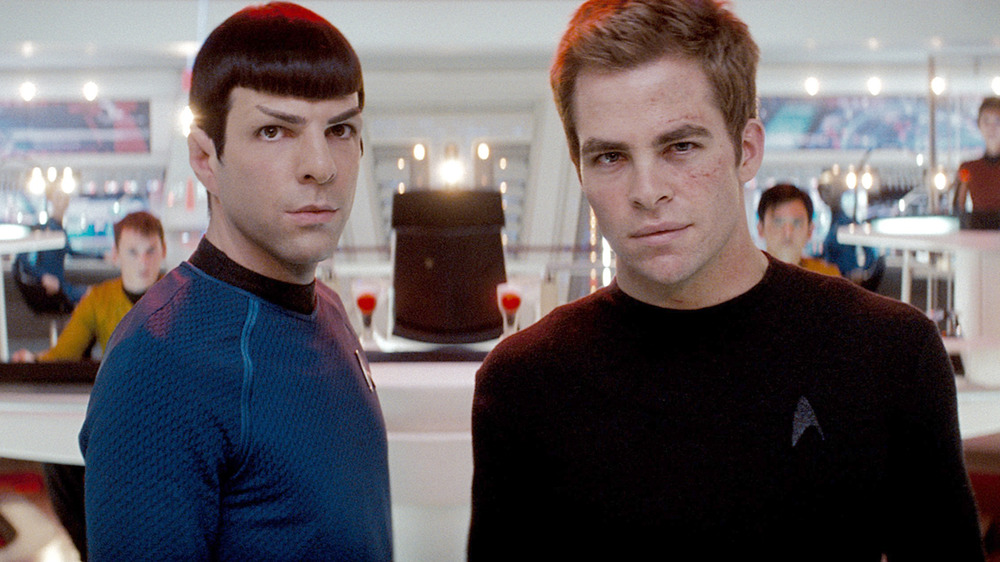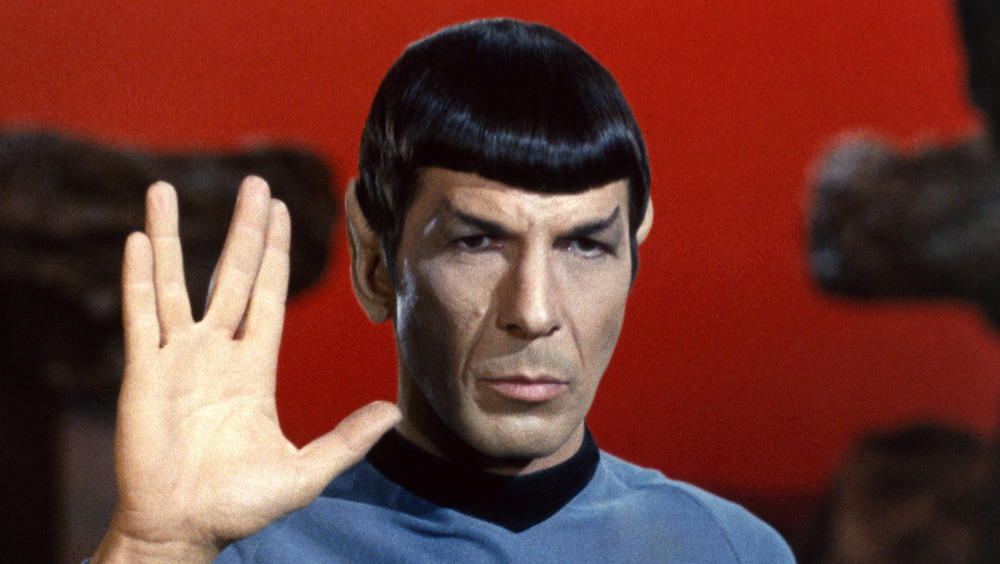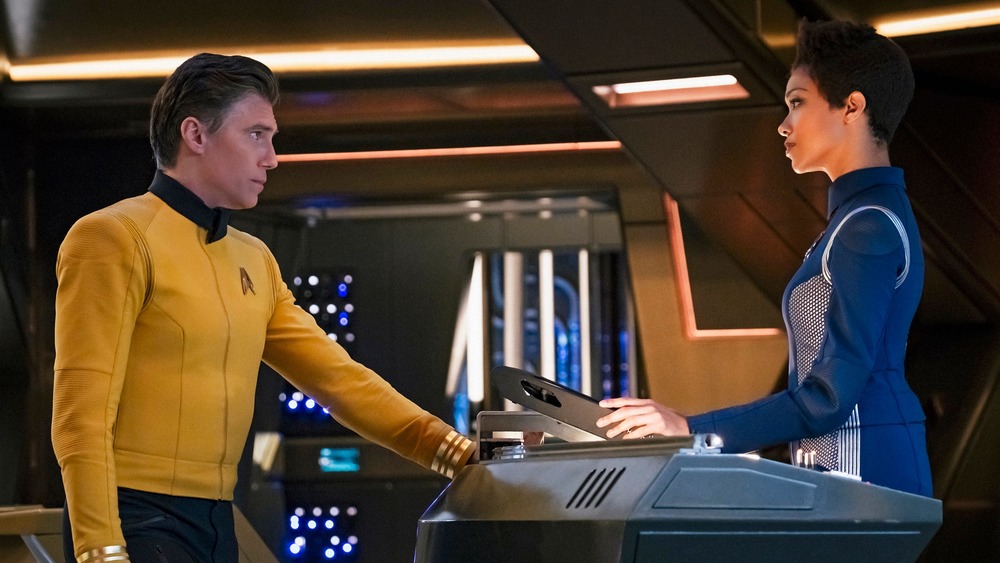The Most Important Dates In Star Trek History
As sci-fi fans know, Star Trek is one of the longest-running media franchises in modern times. Since the original series premiered in September 1966, some iteration of the voyages of the starship Enterprise (or a related spin-off) has been continuously available on TV, in theaters, on bookshelves, through video games, and via streaming. Not all of them have been successful, of course (Star Trek V: The Final Frontier, anyone?), but there's rarely been a time in almost six decades when Star Trek fans didn't have a version of their favorite sci-fi saga to watch, read, or play.
What has made Star Trek last so long? It's been a combination of indelible characters, remarkable sci-fi concepts and stories, and the franchise's uncanny ability to comment on the times no matter what decade it's in. From Gene Roddenberry's original vision of a hopeful, inclusive future to the darker, more complicated edge of shows like Star Trek: Picard, the franchise has continually held up a mirror to humanity and showed us at our best and our worst.
With over 50 years of production behind it, Star Trek certainly has its share of important milestones in its development and ongoing evolution. While the future of Trek itself is unwritten — the "undiscovered country," as a Klingon leader once called it — here are, for now, the most important dates in this fascinating franchise's history.
Gene Roddenberry puts his 'Wagon Train to the stars' on the road (March 11, 1964)
Star Trek officially came to life on March 11, 1964, when former pilot and police officer turned television writer Gene Roddenberry penned a 16-page outline for a science fiction TV series he dubbed "Wagon Train to the stars." The show was also loosely inspired by Jonathan Swift's Gulliver's Travels, with Roddenberry planning to use the sci-fi framework to tell morality tales about modern society.
In his original conception, the U.S.S. Yorktown was the vessel at the heart of the show, commanded by Captain Robert April. Among the crew were a female executive officer only known as Number One, a doctor named Phillip Boyce, and a first lieutenant of indeterminate extraterrestrial origin called Mr. Spock. Nestled within those 16 pages were also some 25 story ideas, a number of which eventually became the basis of Star Trek episodes.
While many things changed along the way — including the name of the ship from Yorktown to Enterprise — the essential idea remained the same. Roddenberry shopped his premise to several TV networks and production companies, with all but one passing — Desilu Studios, owned by Lucille Ball. Desilu in turn sold the pitch to NBC, which commissioned a pilot called "The Cage." Star Trek was on the launchpad ... until NBC rejected the pilot.
The Original Series sets course for strange new worlds (Sept. 8, 1966)
NBC liked some of what it saw in the first Star Trek pilot, "The Cage," but the story was deemed "too cerebral," and network execs were also wary of the demonic-looking Mr. Spock, played by a relatively unknown actor named Leonard Nimoy.
NBC requested an unprecedented second pilot, and Roddenberry delivered a more action-oriented tale called "Where No Man Has Gone Before." While Spock was retained, nearly every other role was recast — including the ship's captain, now named James Tiberius Kirk and played by young Canadian thespian Willian Shatner. The second time was the charm, and NBC picked up the series.
On September 8, 1966, Star Trek premiered on NBC with an episode called "The Man Trap." The fifth entry filmed in regular production, it had the Enterprise encounter the last member of a shapeshifting alien species that needed salt to survive. It introduced several characters who would become part of Star Trek history, including Dr. Leonard "Bones" McCoy (DeForest Kelley), Communications Officer Nyota Uhura (Nichelle Nichols), physicist (later a helmsman) Hikaru Sulu (George Takei), and Yeoman Janice Rand (Grace Lee Whitney). The Enterprise's stated five-year mission was on its way.
The original mission ends two years early (June 3, 1969)
It's been debated for years whether Star Trek always fared low in TV's Nielsen ratings. While the show was never an unconditional hit, it may have actually done better with audiences than has long been assumed. Nevertheless, NBC was looking to cancel the show after its second season, not just because of ratings but due to constant creative and budgetary battles with Gene Roddenberry.
A massive letter-writing campaign led to Star Trek getting renewed for a third season, with Roddenberry — who'd stepped back from the show during the previous year — promising to return as full-time producer in exchange for a decent time slot. But when NBC stuck the show in the "death slot," 10 PM on Friday nights, Roddenberry walked away and appointed Fred Freiberger as the new producer.
With Freiberger at the helm, the third season — which suffered from even steeper budget cuts — is universally considered Star Trek's worst. While several episodes did stand out, nothing matched the quality of classics from the first two seasons like "The City on the Edge of Forever," "Balance of Terror," or "Mirror, Mirror." Viewers began to desert the show, too, and on June 3, 1969, the last episode produced, "Turnabout Intruder," aired on NBC. The five-year mission had been cut short.
Star Trek lives! (January 21-23, 1972)
Following its cancellation by NBC, Star Trek immediately went into syndication to local TV outlets in markets around the country, with its 79 episodes often rerunning five days a week in late afternoon or early evening time slots. As with so much about Trek, the results were unprecedented. Viewed by a new generation of fans who had missed the show in its original run, Star Trek became even more popular after its cancellation than it had ever been during its network heyday.
As sales of Star Trek merchandise (including books, comics, model kits, and toys) began to rocket upwards and the show's dedicated fan base — known at first as "Trekkies" and later as "Trekkers" — began to grow, the first official Star Trek convention was held in New York City from January 21-23, 1972. While there had been unofficial Trek gatherings before, this one was solely devoted to Trek and featured guest appearances by Gene Roddenberry, original series story editor D.C. Fontana, and other production personnel.
A few hundred fans were expected to attend, but by the end of the weekend, the Lakeland Ledger said the estimated head count was 3,500. The second annual convention, held the following year, drew some 7,000 Trekkers. Star Trek was very much alive in the hearts and minds of its fans, but the question was, could it live again on the screen?
Star Trek: The Motion Picture takes the Enterprise out of dry dock (Dec. 7, 1979)
By the mid-1970s, a Star Trek revival seemed inevitable, although whether the Enterprise would fly again on the small screen or in movie theaters wasn't so clear. An animated children's series based on the show — with voices by many of the original actors — lasted for just 22 episodes in 1973 and 1974. Meanwhile, plans to launch a Paramount television network with a show called Star Trek: Phase II were set in motion in 1977. Even though the series got well into pre-production — with Gene Roddenberry producing and all the original cast except Leonard Nimoy reprising their roles — Paramount corporate parent Gulf & Western pulled the plug in 1978.
Star Trek wasn't dead, however. Paramount officially announced Star Trek: The Motion Picture, directed by Robert Wise (West Side Story) and based on a revamped version of the Phase II pilot script. Nimoy agreed to return, with the story centering on the Enterprise's encounter with a massive alien intelligence headed towards Earth. Overbudget, barely completed in time for its premiere, and hampered by dodgy visuals and a flabby story, Star Trek: The Motion Picture was nonetheless a box office hit when it hit theaters in December 7, 1979, even if its price tag made it less than profitable. Nevertheless, there was an audience out there that wanted more adventures in "the final frontier."
Spock's sacrifice stuns the world (June 4, 1982)
While Star Trek: The Motion Picture was wildly expensive (and thus less profitable), it did prove there was an audience out there who would watch the Enterprise on the big screen. So Paramount Pictures ordered a sequel. Television producer Harve Bennett was hired to bring the movie in on time and on (a much lower) budget, while Nicholas Meyer was recruited to direct and write a new draft of the script. There was one obstacle, however. Leonard Nimoy refused to return ... unless Mr. Spock was killed off.
The result was Star Trek II: The Wrath of Khan, in which Kirk and the Enterprise met up once again with Khan Noonien Singh (Ricardo Montalban), the popular villain from the show's first season episode "Space Seed." And the movie did end with Spock sacrificing himself to save the ship — a stunning, poignant finale that left audiences reeling. But Trek II was a tremendous hit, with fans and critics alike proclaiming that the movie did a much better job of capturing the flavor of the series.
Of course, Spock eventually came back, and there have been (to date) 11 more Trek movies, including four more with the original cast, four with The Next Generation crew, and three with the Kelvin Timeline ensemble. But thanks to a great story and Spock's now-legendary death, The Wrath of Khan remains the gold standard of Trek on the big screen.
The Next Generation launches a new mission (Sept. 28, 1987)
By 1986, it was finally decided by Paramount that Star Trek would return to broadcast television. But acknowledging that the original cast members were both aging and requiring higher salaries, the new show would feature a fresh crew of mostly unknown actors.
Announced in October 1986 and premiering a year later on September 28, 1987, Star Trek: The Next Generation was launched as a syndicated show — sold independently to local stations instead of through a TV network — and moved the story 80 years into the future, with a sleek new Enterprise commanded by an imposing Frenchman named Jean-Luc Picard (Patrick Stewart). Gene Roddenberry once again was at the helm (for the first year) and kept to the basic Trek template.
Although the show didn't really find its groove until its third season, The Next Generation was a hit out of the box, with The New York Times noting that its ratings were often comparable to shows on major networks. In addition to Picard, it introduced new favorites like the android Data (Brent Spiner) and the Klingon officer Worf (Michael Dorn), plus formidable enemies like Q (John de Lancie) and the terrifying Borg collective. Running for seven seasons — over twice that of the original series — The Next Generation began a new era for the franchise.
The Great Bird of the Galaxy soars into history (Oct. 24, 1991)
Gene Roddenberry passed away on October 24, 1991 at the age of 70. Nicknamed "the Great Bird of the Galaxy" by original Star Trek associate producer Robert Justman (after a throwaway line in the episode "The Man Trap"), Roddenberry was inextricably connected with the franchise he created for the rest of his life. In addition to creating and producing the original show, he produced or consulted on all the feature films until his death, and he created Star Trek: The Next Generation, although his failing health forced him to step away after its first season.
While Roddenberry's talents and overall influence on Star Trek have been re-evaluated over the years — and his personal foibles, such as alleged misogyny, brought to light – there's no questioning the immensity of his contribution to pop culture and science fiction. Star Trek was the first truly intelligent sci-fi show with regular characters. The way it addressed issues of the day through genre window dressing was groundbreaking for its time. The mythos that Roddenberry conceived — along with his refreshingly optimistic and forward-thinking view of humanity — has endured for nearly six decades and will assuredly stand for many more.
Deep Space Nine takes Trek down a different path (Jan. 3, 1993)
Several years after The Next Generation premiered, Paramount wanted to develop a new series set in the Star Trek universe. With Gene Roddenberry passing away in 1991, this would be the first Trek show where he'd have no involvement. TNG producers Rick Berman and Michael Piller were charged with creating the new series, which ended up being called Deep Space Nine.
Premiering on January 3, 1993, DS9 was in its own way just as groundbreaking as the original Star Trek. It was the first Trek series to feature a Black commander (Benjamin Sisko, played by Avery Brooks), it was set on a space station instead of a starship, and it was darker in tone than any previous Trek iteration. It featured interpersonal conflicts among the crew and inhabitants of the station (unlike past shows), and it also introduced story arcs that stretched across entire seasons, such as the Dominion War.
Political intrigue, occupation, terrorism, and galactic conflict were all part of DS9's seven-season run. While not as highly rated at the time as TNG, DS9 has been cited by many fans as the best Trek series of all. The two that followed in its wake — Star Trek: Voyager (1995-2001) and the prequel show Star Trek: Enterprise (2001-2005) — weren't as acclaimed, and the latter's cancellation after just four seasons began a 12-year drought of Trek on TV.
Welcome to the Kelvin Timeline (May 8, 2009)
Seven years after the last movie to feature the Next Generation cast (2002's poorly received Nemesis) and four years after Enterprise went off the air, Star Trek was reinvented again — this time by Lost and Fringe creator J.J. Abrams as a major feature film that would tell the origin story of the classic Star Trek cast.
Abrams and his team came up with a brilliant concept. Certain events in their story would create an alternate reality — dubbed the Kelvin Timeline — in which their Trek characters could forge their own adventures while preserving the original canon as the "Prime" universe. This also allowed for one last appearance by Leonard Nimoy as Spock Prime, showing up to dispense crucial information to a young James Kirk while also symbolically passing the torch.
The cast of Abrams' Star Trek was what made it work. Chris Pine as Kirk, Zachary Quinto as Spock, Zoe Saldana as Uhura, and Karl Urban as Dr. McCoy gave this new Trek an energy and freshness that had been missing for a while. Critics and audiences responded favorably, with the film earning an astonishing $386 million. While the next two Kelvin films — 2013's Star Trek Into Darkness and 2016's Star Trek Beyond – were, respectively, a half-baked remake of The Wrath of Khan and a box office underperformer, the 2009 Star Trek remains an exciting and bracing entry in the series.
Leonard Nimoy lived long and prospered (Feb. 27, 2015)
Leonard Nimoy, beloved by generations of fans as Mr. Spock, died on February 27, 2015 at the age of 83 from chronic obstructive pulmonary disease (COPD). While other revered members of the original Star Trek cast had passed before him — including James Doohan (Scotty) in 2005, DeForest Kelley (Dr. McCoy) in 1999, and Mark Lenard (Spock's father, Sarek) in 1996 — Nimoy's death hit especially hard. Not only was Mr. Spock arguably the most well-known and popular character in Trek history, even more so than Captains Kirk and Picard, but Nimoy embraced his alter ago (after a brief estrangement) and advocated for Trek's message of optimism, tolerance, and humanism until the end of his life.
While some of his castmates were hobbled in their post-Trek careers by typecasting, Nimoy enjoyed a long and fruitful life afterwards that included more acting (on TV, in films, and on the stage), directing (including two Trek films and other non-genre work), writing (he authored two memoirs and several books of poetry), music, photography and activism. Yet with all these accomplishments to his name, he was and always shall be "our friend" — the logical, brilliant, loyal, and courageous Mr. Spock.
Star Trek: Discovery boldly goes into the future (Sept. 24, 2017)
After more than a decade with no new Star Trek on TV, CBS decided to launch its new streaming service, CBS All Access, with a brand new Trek series called Star Trek: Discovery. Set a decade before The Original Series, Discovery didn't quite look like a prequel but more like another alternate reality version of Trek. The diverse cast was led by Sonequa Martin-Green as Michael Burnham, who rises from mutineer to captain of the title ship amidst a war with the Klingons, conspiracies inside the Federation, and strange occurrences throughout the galaxy.
Discovery had a troubled lift-off and went through several showrunners before settling down in its second season. Nods to the canon with new versions of Captain Christopher Pike and Mr. Spock — who also happens to be (surprise!) Burnham's adopted brother — either lured in or turned off some wary Trekkers, as well.
While Discovery has polarized the fan base, its success has led to a Trek resurgence on TV, with Star Trek: Picard, a new animated show called Lower Decks, and at least two more series — including the Pike-Spock-centric Strange New Worlds — in the works. Thanks to Discovery, Star Trek looks certain to boldly go where no movie or TV franchise has gone before.
